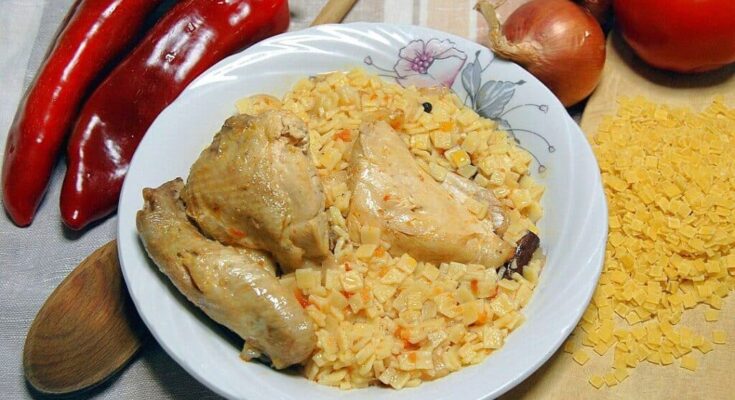
The traditional trahana and chilopites of Greece are among the world’s 100 best pasta varieties, αccording to TasteAtlas, which provides information on cuisines and local foods through maps, lists, and awards.
TasteAtlas has designated trahana as the 22nd best pasta worldwide out of a hundred different types. Chilopites are the 31st best type of pasta further down in the same mostly Italian-dominated list.
This important distinction for two of Greece’s most traditional pasta dishes is proof of the rich culinary heritage of Greece.
Trahana and chilopites are two less well-known pasta varieties outside of Greece. This makes their distinction among other globally renowned pasta types even more impressive.

Greece’s trahana is a uniquely traditional pasta variety
Trahana, the 22nd best type of pasta worldwide, according to TasteAtlas, is a traditional pasta of Greece that is distinctively small but with a rich texture and unique flavor.
Made exclusively from a mixture of wheat or semolina and fermented milk or yoghurt, trahana is often described by food experts as a type of dried pasta with a slightly sour taste that ideally complements one’s culinary demands.
Its unique preparation method goes back in time and involves drying the mixture in the hot Mediterranean sun. This results in small, irregularly-shaped granules.
This versatile pasta from Greece is commonly used in soups and stews. It absorbs much of the liquid and results in a thick, hearty consistency similar to that of orzo (Greece: kritharaki).
Trahana is also known for its high nutritional value and has a long shelf life with the capacity of adding depth to various dishes.
Trahana is also known as tarhana and is found in many regional cuisines of Central Asia, Southeast Europe, and the Middle East.
Chilopites are Greece’s traditional village pasta
Ranking 31st on the list, chilopites are another traditional pasta variety from Greece which has gained international recognition with the latest TasteAtlas ranking of the 100 best pasta types worldwide.
This tiny, mostly square-shaped pasta is typically made from wheat flour, eggs, and milk. During the preparation of chilopites, the dough is rolled out until it is quite thin and then cut into small squares or rectangles. These pieces are then thoroughly dried before use.
Chilopites are also known for their ability to absorb flavors particularly well, making them a great ingredient in many Greek dishes, including meat and vegetarian dishes.
They are often served with meat sauces, used in casseroles, or simply tossed with olive oil and cheese for a quick and satisfying meal full of Greek flavors.
Regardless of whether you choose trahana or chilopites, you can’t go wrong with either of these two of Greece’s pasta varieties—or just try them both.
What other types of pasta made it to the top?
At the top of the TasteAtlas list, we find tagliattele, the globally beloved pasta from Emilia Romagna in Italy.
Tagliattele is not very different from Greece’s chilopites, as it is made with wheat and milk. However, it is much longer, resembling other Italian pasta varieties, such as spaghetti.
The top five list is occupied by four additional Italian varieties: pici, ravioli, linguine, and pappardelle.



